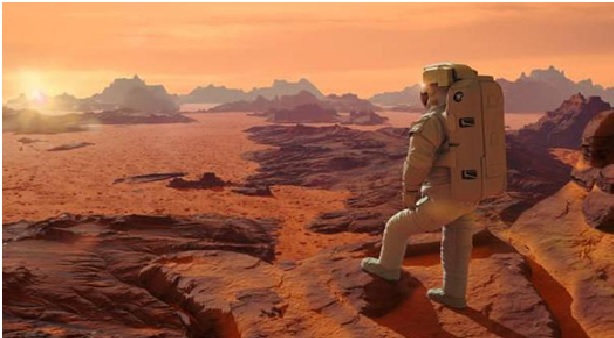A Mathematical Model Used to Predict Astronaut Safe Travel on Mars
The Australian National University (ANU), space medicine expertsdeveloped a mathematical model. It could be used to predict whether an astronaut can safely travel to Mars and fulfil their mission duties upon stepping foot on the Red Planet.

1: New mathematical model to predict astronaut travel on the red planet.
Figure 1 shows that the ANU team simulated the impact of prolonged exposure to zero gravity on the cardiovascular system to determine whether the human body can tolerate Mars’ gravitational forces — which aren’t as strong as on Earth — without fainting or suffering a medical emergency when stepping out of a spacecraft. [1]
The model could be used to assess the impact of short and long duration space flight on the body and could serve as another important piece of the puzzle in helping land humans on Mars.
Dr Emma Tucker said prolonged exposure to zero gravity can cause the heart to become lazy because it doesn’t have to work as hard to overcome gravity in order to pump blood around the body.
"When you’re on Earth, gravity is pulling fluid to the bottom half of our body, which is why some people find their legs begin to swell up toward the end of the day. But when you go into space that gravitational pull disappears, which means the fluid shifts to the top half of your body and that triggers a response that fools the body into thinking there’s too much fluid," Dr Tucker said.
"As a result, you start going to the toilet a lot, you start getting rid of extra fluid, you don’t feel thirsty and you don’t drink as much, which means you become dehydrated in space. [2] "The purpose of our model is to predict, with great accuracy, whether an astronaut can safely arrive on Mars without fainting. We believe it's possible."
Due to a communication delay in relaying messages between Mars and Earth, astronauts must be able to out their duties without receiving immediate assistance from support crews. Dr. van Loon said this window of radio silence differs depending on the alignment of the Sun, Earth and Mars in its orbit, but could last for at least 20 minutes.
The model uses an algorithm based on astronaut data collected from past space expeditions, including the Apollo Missions, to simulate the risks involved with travelling to Mars.This would provide the researchers with a more holistic picture of what would happen if an "everyday" person was to travel into space. [3]
References:
- https://spaceref.com/science-and-exploration/mathematical-model-provides-method-for-landing-humans-on-mars/
- https://www.myscience.org/news/wire/mars_model_provides_method_for_landing_humans_on_red_planet-2022-anu
- https://phys.org/news/2022-08-mars-method-humans-red-planet.html
Cite this article:
Sri Vasagi K (2022), A Mathematical Model Used to Predict Astronaut Safe Travel on Mars, Anatechmaz, pp. 396

